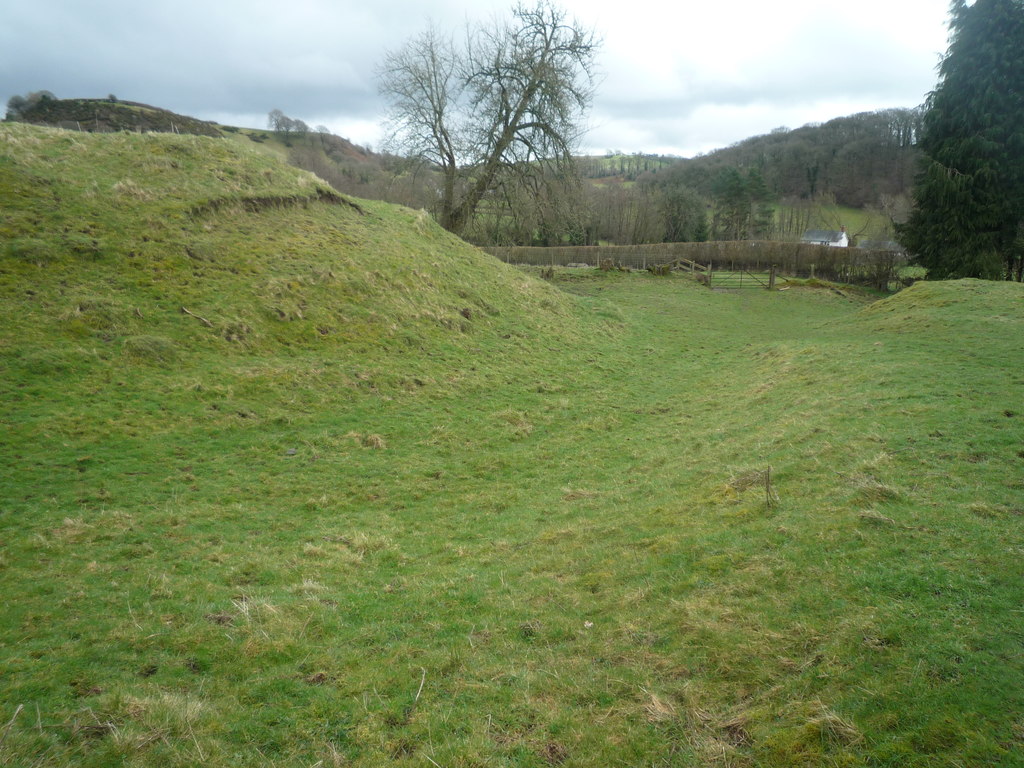
Lingen Castle was built in the parish of Linge, Herefordshire, probably soon after the Norman Conquest in 1066. In the late-12th century, it was reinforced with stone and a planned settlement was constructed to the north. Only earthworks and traces of stone now survive.
Soon after the Norman Conquest, Lingen Castle was built as a motte and bailey fortification, to the north of the current parish church. A Flemish knight called Turstin held the manor for the Mortimer family, and was probably responsible for the work. The motte was 19 m in diameter at the top, and 6.7 m high. A square bailey lay to the west, protected by a rampart and ditch.
Thurtson’s descendants took the name of Lingen, and probably in the late-12th century built a shell keep was built on the motte, a curtain wall constructed around the bailey and a twin-towered gatehouse added to protect the western entrance. A planned settlement with earthworks was constructed to the north.
Today, the castle’s earthworks are under pasture, and protected under UK law as a Scheduled Monument.
Bibliography
- Robinson, C.J. (1869) The Castles of Herefordshire and Their Lords. (London: Longman)
- Halliwell, P.R. (ed), 1992, Herefordshire Archaeological News Volume 57
- RCHME (1934) An Inventory of the Historical Monuments in Herefordshire Vol. 3: North-West (London: HMSO)
Attribution
This page includes images from the Geograph website, attributed as follow: Linden Castle earthworks, by Fabian Musto, released under CC BY-SA 2.0.
